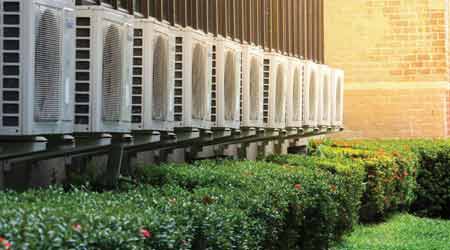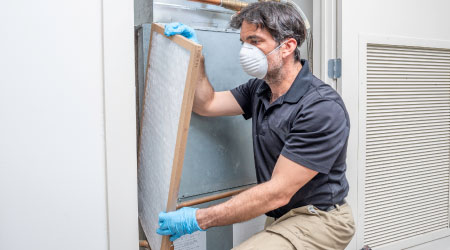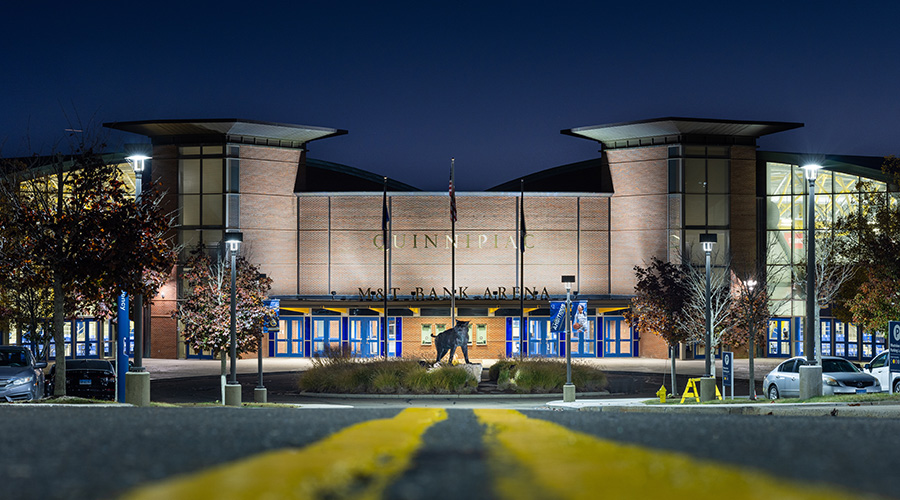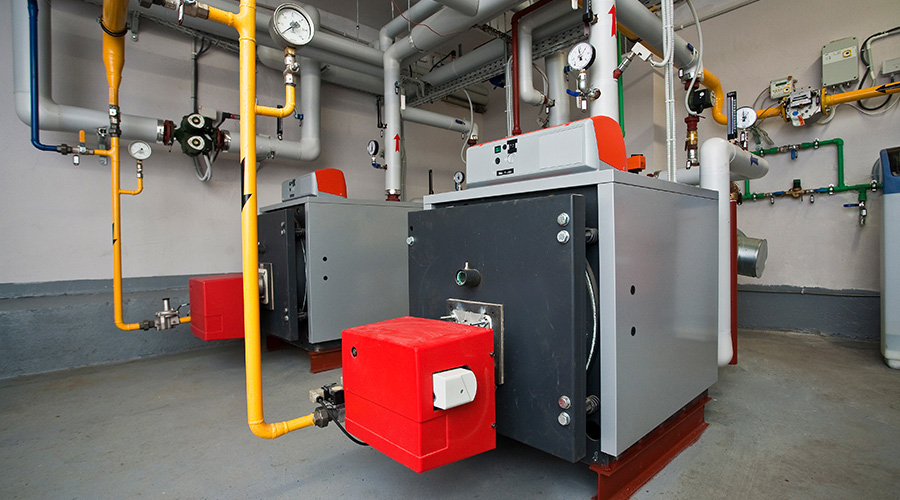 Shipments of heat pumps have increased by about 50 percent over the past seven years.Toli Scape / Shutterstock.com
Shipments of heat pumps have increased by about 50 percent over the past seven years.Toli Scape / Shutterstock.comKnow The Pros and Cons of VRFs and Air Source Heat Pumps
Better room-by-room control, but perhaps less aesthetically pleasing because of exposed duct work, are just some of the factors FMs should weigh.
Both VRF systems and smaller air source heat pumps have variable speed compressors and fans, with a roughly 3:1 turndown ratio (ratio of maximum to minimum speed), so the “variable” designation really applies to both large and small systems. But there are important differences.
Generally, VRF systems are in the 3-14 ton range, while smaller systems are in the 1.5-4 ton range. The tonnage refers to the nominal cooling capacity of the outdoor unit. VRF systems are typically 3-phase electrical, whereas smaller heat pumps are typically single-phase. VRF systems have the capacity to operate simultaneously in heating and cooling, recovering heat from cooling zones and delivering it to heating zones, and so save energy if simultaneous operation is needed. In buildings with multiple tenants, smaller systems can each be assigned to different tenants, which facilitates attributing the electrical load (and metering) to specific tenants. Refrigerant leaks are also easier to find in smaller systems.
Smaller systems have slightly higher rated efficiencies, in the 10-11 HSPF range (heating seasonal performance factor), peaking just over 11. VRF systems have rated efficiencies in the 8-11 HSPF range, peaking just under 11.
The installed cost of smaller systems is significantly lower than the installed cost of VRF systems, per square foot of building.
Smaller heat pump systems typically accommodate eight indoor units maximum (and sometimes the maximum is fewer than eight, for any given manufacturer). On the other hand, VRF systems support up to 12 indoor units per system. Smaller heat pump systems allow pipe lengths up to about 250 feet, whereas VRF systems allow piping up to 500 feet or more. Smaller systems allow vertical pipe lengths up to about 50 feet, whereas VRF systems can allow vertical pipe lengths over 150 feet.
For smaller buildings, and for buildings such as multifamily buildings and hotels, the smaller systems make sense, delivering higher efficiency at lower installed cost. For larger buildings, the larger VRF systems offer larger capacities and advanced features such as heat recovery from simultaneous heating and cooling, longer pipe lengths, and more indoor units per system.
Pros and cons of heat pumps
Heat pumps are a different type of equipment, and it takes getting used to their pros and cons. Other than low carbon emissions and likely lower installation costs, air source heat pumps offer a variety of benefits. These include:
• �Room-by-room temperature control, leading to better comfort.
• �No requirement for a mechanical room.
• �Eliminated heat losses from boilers and piping.
• �No requirement for chimney or venting.
• �No risk of carbon monoxide poisoning or natural gas explosion.
Air source heat pumps do bring some risks, as well. Ductless indoor units can be aesthetically unappealing to some people, in which case ducted units can be considered. If indoor units are placed in poor locations, objectionable airflow (feeling like drafts) can occur — for example, in cooling, if wall-mounted units are located above desks or in other locations where people are stationary. If condensate pans plug up, condensate will overflow and can damage indoor finishes.
Refrigerant leaks can occur, especially if piping joints are fastened poorly. However, many systems can operate for years without leaks, if installed carefully. A small study in Tompkins County, N.Y., found no refrigerant leaks reported in nine out of ten installations, including two installations that are 15 years old. Only one of the ten installations had any refrigerant leaks. A European study found that leaks average 3.5 percent per year.
Related Topics:














